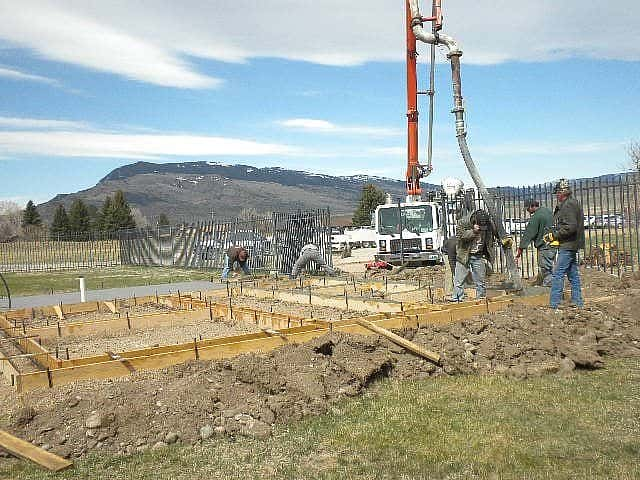
Bird “shopping” for the Greater Yellowstone Raptor Experience
While the mews were under construction (we even had concrete poured!!!), I started looking for birds for our Greater Yellowstone Raptor Experience program. The estimated completion date for the mews was May 31, which gave me less than two months until we should be ready for birds! All raptors are protected by state and federal laws in the United States and in order to keep them in captivity you have to have permission from the U.S. Fish & Wildlife Service and your state wildlife agency (Wyoming Game & Fish Department for us). The application process for the permits can take up to 90 days, so I decided to start looking for birds to use in our program.
We want to highlight the birds you will find in the Greater Yellowstone Ecosystem, which is a surprisingly low number of raptor species. All birds for our education program must be non-releaseable—meaning there is something wrong with them that prevents them from being able to survive on their own in the wild. Where do you find non-releasable raptors, you ask?
Why, on the International Wildlife Rehabilitation Council website, of course! This is a place where rehabbers can place “ads” for animals that need new homes. Unfortunately, the percentage of injured or orphaned animals that are able to be released back into the wild isn’t that high. When they can’t be released, rehabbers try to place them with educational facilities like ours to give them a second chance at life.
My first visit to the website was exciting and overwhelming at the same time. Sooooo many animals needing new homes, yet not many that would fit our program. Eventually, I found an ad for a female Great Horned Owl with a wing injury, an American Kestrel (smallest falcon species in North America), a Peregrine Falcon, and a couple other birds. I wrote quick notes to each of the advertisers telling them about our program and what we had planned.
After that, all I could do was sit and wait for responses…
Written By
Melissa Hill
While earning her Bachelor's Degree in Wildlife Management at the University of Wyoming, Melissa began volunteering at Laramie Raptor Refuge and was instantly hooked on birds of prey. Since those early days, she has worked with nearly 70 different raptors at four different raptor education groups in three states. She is a former member of the Education Committee for the International Association of Avian Trainers and Educators (IAATE) and a National Association for Interpretation's Certified Interpretive Guide. When she's not "playing with the birds" she enjoys spending time quilting, crocheting, and exploring the Greater Yellowstone Ecosystem with her non-bird family.

